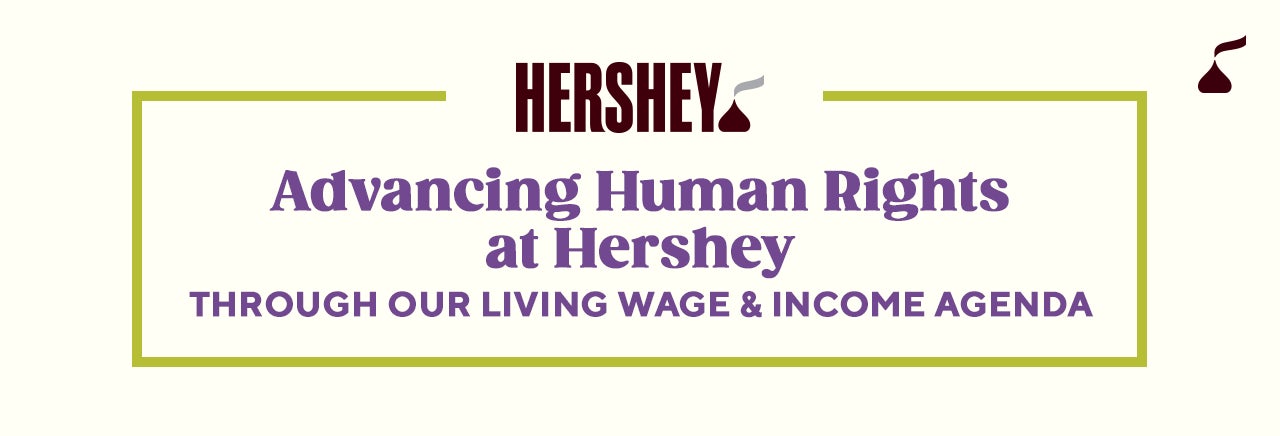December 8, 2023
At Hershey, we believe that all individuals deserve the opportunity to earn a living wage or income and that there is a direct linkage between living wage and income and other human rights issues, such as child labor, deforestation and gender inclusion. This understanding has led us to prioritize living wage and income as a central component of our human rights agenda. As we commemorate Human Rights Day, we are sharing our updated Living Wage & Income Position Statement which reflects on the progress, challenges and important work ahead to achieve our overall goal of advancing human rights in our value chain.
Since first sharing our Living Wage & Income Position Statement in 2021, our focus has remained on the areas where we have the most control (our own employees) and where our risk assessments show the greatest vulnerabilities (cocoa farming communities in Côte d’Ivoire). We are proud of the progress we have achieved:
- We have continued to pay all full-time employees a living wage against BSR’s benchmarks. We are also proud that we have maintained aggregate pay equity for women across our U.S. workforce and achieved aggregate pay equity for our U.S. salaried people of color (POC) team members. Our living wage and fair compensation practices are formally embedded in our compensation strategy, and we also established an internal living wage dashboard that provides up-to-date analytics on employee pay vs. living wage benchmarks by role and region.
- In cocoa, we built on our existing programs and income diversification programs by launching our Living Income Accelerator – a five-year program that is being implemented in partnership with the Conseil du Café-Cacao, Rainforest Alliance and CARE. Our Income Accelerator is focused on two strategies: the provision of cash transfers to supplement farmer income conditional to farm improvements and investment in Village Savings and Loans Associations (VSLAs.) Together, these strategies will reach 20,000 households in Côte d’Ivoire.
We are proud of the steps we have taken while acknowledging that more progress is needed, such as local capacity, data, tools and collaboration to scale efforts within and across industries. We are continuing to take steps to keep advancing our work. Key actions for our living wage and income agenda include:
- Co-chairing the AIM Progress Living Wage and developing the Living Wage Playbook, a practical tool for fast-moving consumer goods companies and their suppliers to build living wage into their supply chains.
- Partnering with Living Wage For US to develop a user-friendly tool that calculates total remuneration, helping organizations and employees better understand and advocate for living wage.
- Serving as a founder of the Living Wage Consortium, a multi-stakeholder coalition aimed at creating consistency in the living wage landscape and advocating for the implementation of living wages across various industries through the publication of benchmark data.
- Recognizing that our cocoa supply chain touches different origins, we continue to collaborate with the Living Income Community of Practice and financially support the development of living income benchmarks. We believe the living income benchmark is a pragmatic way that answers the question: how much does a typical household in a particular place need to earn, from all income sources, in order to achieve a decent standard of living? We use this benchmark to design program foundations needed for economic resilience in the context of farming households.
On this Human Rights Day, we remain dedicated to doing the work necessary to further our learning and progress. Hershey looks forward to continuing to embrace conversations and initiatives that drive progress, promote economic mobility and work towards a world where everyone has the opportunity to earn a living wage or income.
